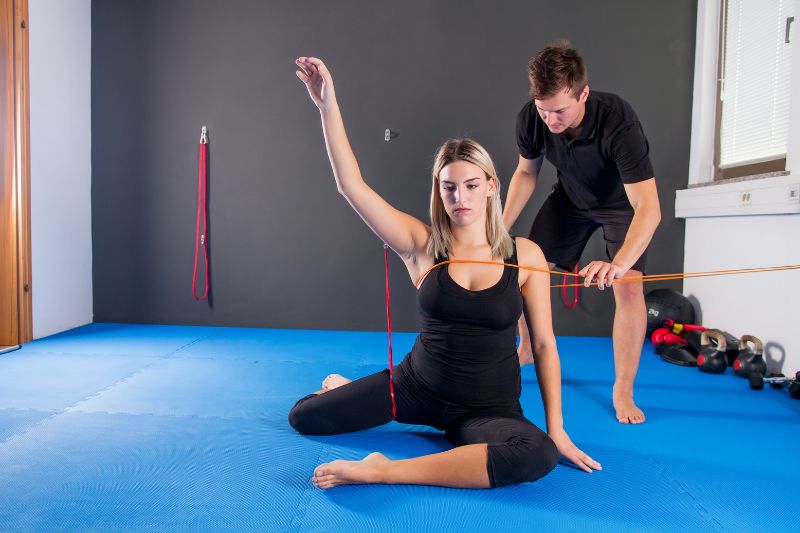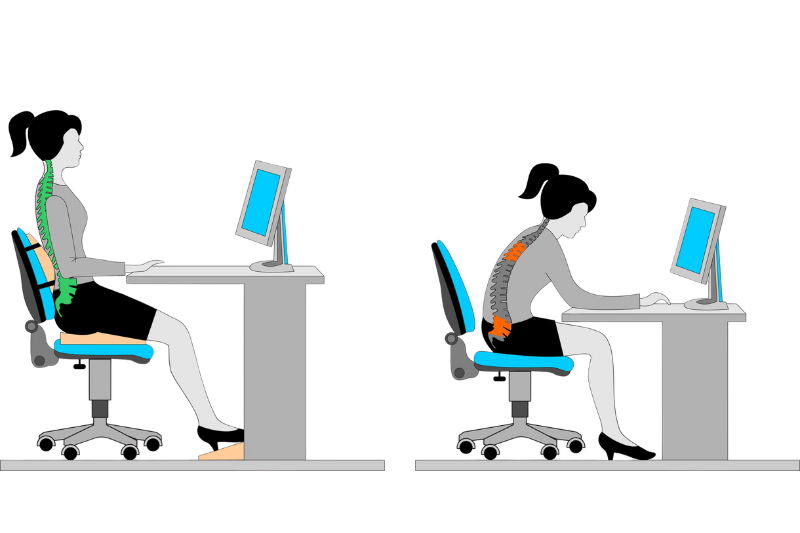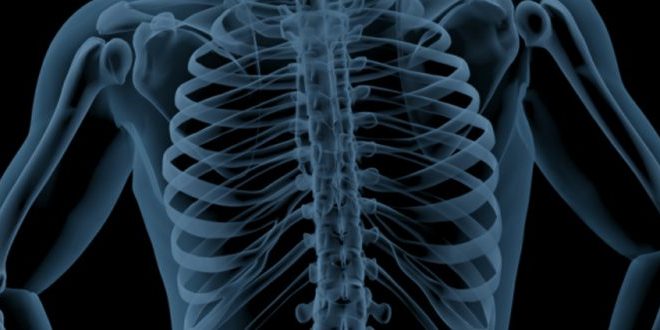Addressing Postural Issues with ART
Modern lifestyles of prolonged sitting and repetitive movement patterns often lead to postural dysfunction, causing headaches, neck and shoulder tension, and restricted breathing. Active Release Technique (ART) is a hands‑on, movement‑based therapy that precisely locates and releases fascial adhesions and scar tissue binding muscles, tendons, and nerves. By combining targeted pressure with guided motion, ART restores tissue glide, improves circulation, and resets neuromuscular control. When paired with movement retraining, it delivers lasting postural correction and pain relief.

In a world where we spend more time than ever seated at desks, driving in cars, or locked into the same repetitive movement patterns, it’s no surprise that postural dysfunction has become one of the most common — and overlooked — causes of pain. Whether you're a dedicated athlete, a hard-working parent, or a professional glued to a screen for hours a day, poor posture can sneak up and create a ripple effect through your entire body.
Most people don’t connect the dots between posture and the symptoms they’re struggling with. Headaches. Neck tension. Achy shoulders. Fatigue that doesn’t make sense. Even breathing patterns can be altered by how you hold your spine and shoulders. When posture breaks down, so does the body’s efficiency — and that leads to pain and inflammation.
That’s where ART, or Active Release Techniques, comes in.
ART is a specialized soft tissue technique that targets and releases the adhesions — those sticky, restricted areas in muscles, fascia, and connective tissue — that form from overuse, trauma, and repetitive strain. Instead of simply stretching tight areas, ART identifies and works through layers of dysfunction. It’s hands-on, precise, and results-driven.
What is Active Release Technique (ART)?
A Brief History of ART
Active Release Technique (ART) was developed in the 1980s by Dr. Michael Leahy, a chiropractor and engineer who began noticing consistent patterns in the soft tissue complaints of his patients — particularly athletes. Drawing from his background in biomechanics, he developed a system that used movement-based manual therapy to break up adhesions and restore function. Today, ART is recognized globally and trusted by elite sports teams, Olympic athletes, and progressive clinicians alike for its powerful results.
How ART Works
At its core, ART is a hands-on therapy that combines targeted pressure with precise, guided movements. The goal? To release adhesions — the scar tissue and “stuck” areas that develop between muscles, fascia, and other connective tissues due to overuse, injury, or prolonged poor posture.
These adhesions restrict movement, reduce strength, and often cause inflammation or nerve entrapment. With ART, the provider locates the exact spot of restriction, then uses manual tension while guiding the muscle or joint through a range of motion. This encourages normal tissue sliding, blood flow, and nerve communication to return.
More Than Muscle Work
Unlike traditional massage or stretching, ART doesn't just "relax" muscles — it resets function at a deeper level. It works with:
- Muscles and tendons – freeing shortened or knotted tissue
- Fascia – the webbing that holds tension and old movement patterns
- Ligaments and joint capsules – often contributors to poor posture
- Nerves – helping to relieve nerve entrapment and improve sensation
By addressing each of these components together, ART offers a whole-system approach to healing.
Why ART Is Different
Most passive therapies simply manage symptoms. ART, on the other hand, targets the root cause of dysfunction and helps restore movement at a foundational level. It’s highly specific — no cookie-cutter routines — and guided by a trained hand that understands how your tissue should move, feel, and respond. That’s why it’s used everywhere from pro sports sidelines to cutting-edge clinics like Mountain Movement.
ART in Action: Real Results
At Mountain Movement, we've used ART to help a wide range of patients:
- A collegiate swimmer with nagging shoulder pain finally returned to full strength after years of failed treatments.
- A local accountant found relief from chronic neck and jaw tension caused by years of desk posture.
- A weekend warrior with a frozen shoulder regained mobility after just a few ART sessions paired with our fascial reset approach.
Whether you're pushing elite limits or just trying to get through your day pain-free, ART can make a powerful difference.
Understanding Postural Dysfunction

Why Does Poor Posture Happen?
Postural dysfunction doesn’t happen overnight — it builds slowly over time, often without us even realizing it. At Mountain Movement, we like to say that posture tells a story. And more often than not, it’s a story shaped by how you live, how you move, and what your body has been through.
Here are the most common culprits behind poor posture:
- Sedentary Lifestyle
Hours of sitting — whether at a desk, in a car, or on the couch — train the body into slouched, shortened, and weakened positions. Muscles designed to stabilize the spine go dormant, while others take on extra work. - Repetitive Motion Injuries
Repeating the same movement day after day (think typing, lifting, or swinging a racquet) creates microtraumas. Over time, these can lock tissues into unnatural patterns and throw posture off balance. - Old Sports Injuries or Unaddressed Trauma
Even if you’ve "recovered," past injuries leave an imprint on your body’s movement system. The body adapts by compensating — often leading to uneven posture, muscular imbalance, and tension. - Poor Ergonomics
Your setup matters. Slouched chairs, unsupportive shoes, or a phone held too low can push your head forward, round your shoulders, and cause your spine to collapse inward. Over time, this becomes the new normal for your posture.
Common Signs Your Posture Is Off
Postural dysfunction doesn’t always scream for attention — sometimes it whispers. If you experience any of the following regularly, your posture may be part of the problem:
- Forward head posture
Your ears sit ahead of your shoulders, placing strain on your neck and upper back. - Rounded shoulders
Often accompanied by tight chest muscles and weak mid-back stabilizers. - Low back strain
A tilted pelvis or tight hip flexors can pull your lumbar spine into poor alignment. - Limited mobility
Tight fascia and locked joints reduce your range of motion and fluidity of movement.
Many people assume these are just the “normal” aches of daily life — but they’re often early warning signs of deeper dysfunction.
The Fascial System: The Hidden Key
Fascia is the body’s connective webbing — a continuous layer of tissue that surrounds and supports muscles, bones, and organs. Think of it as the internal framework that holds your shape and stores your movement patterns.
Here’s the important part: Fascia holds onto trauma and compensation. When an area gets injured or overused, the fascia thickens, tightens, and limits movement. This causes:
- Misfiring muscles – Muscles stop firing in proper sequence, and others overcompensate.
- Chronic tension – Asymmetries develop in the spine, shoulders, hips, and beyond.
- Poor movement habits – Your body builds workarounds that create stress and wear.
How ART Helps Correct Postural Issues
Breaking the Pain Cycle by Restoring Fascia Mobility
One of the biggest reasons postural dysfunction becomes chronic is because the fascia — the body’s internal support web — gets “stuck.” When fascia is restricted, muscles can’t glide smoothly or activate properly. ART works directly on these restrictions, releasing tight fascia and allowing tissues to move freely again. This restored mobility is the first step in breaking the pain-tension cycle that keeps you feeling stiff, sore, and limited.
Releasing Adhesions That Lock You Into Poor Patterns
Adhesions are like glue in the body — they form between muscles, tendons, and ligaments due to overuse, trauma, or prolonged immobility. These adhesions literally hold you in dysfunctional postures by pulling certain areas tight and overloading others. Through specific tension and movement, ART pinpoints and breaks up these adhesions, freeing your muscles to return to their natural length and coordination.
Restoring Blood Flow and Nerve Signal Efficiency
When tissues are bound up and out of alignment, blood flow is restricted and nerves can become compressed or irritated. ART helps restore proper circulation to starved tissues and relieves pressure on nerves, allowing for better oxygenation, waste removal, and communication between the brain and body. That means faster healing and improved muscular control.
Re-Teaching Your Body How to Move
ART isn’t just about release — it’s about resetting. By restoring mobility and normal tension in the muscles, we create the environment for neuromuscular reprogramming. That’s a fancy way of saying we retrain your brain and muscles to work in harmony again. When paired with strategic movement instruction — a cornerstone of our approach at Mountain Movement — this leads to long-term postural correction and more efficient, pain-free movement.
Posture: More Than a Matter of Appearance
Postural issues are far more than cosmetic concerns — they’re often the root of pain, fatigue, and limited movement. Left unaddressed, they can spiral into bigger problems that affect how you live, work, and play. But the good news? They’re fixable.
Active Release Technique (ART) is a science-backed, hands-on method designed to tackle the cause, not just the symptoms. When combined with our holistic, fascia-focused approach at Mountain Movement — including The Day Method, fascia mapping, and neuromuscular retraining — you don’t just feel temporary relief. You experience transformation.
If you’re ready to move mountains in your health, let’s start with how you stand, sit, and move. We’re here to guide your climb — one step, one breath, and one breakthrough at a time.
📍 Mountain Movement Chiropractic & Natural Health
📍 1901 Laurens Road Suite E, Greenville, SC 29607
📞 (864) 448-2073 🌐 mountainmovementcenter.com
🗓️ Office Hours:
Tuesday & Thursday: 9:00 AM – 5:30 PM
Wednesday: 8:30 AM – 4:30 PM
Friday: 9:00 AM – 5:00 PM
Closed Monday, Saturday & Sunday

We Treat the
Toughest Cases
We'd love to talk with you about yours. Ask us anything and we will get back to you with a detailed answer about your case.

.jpg)




